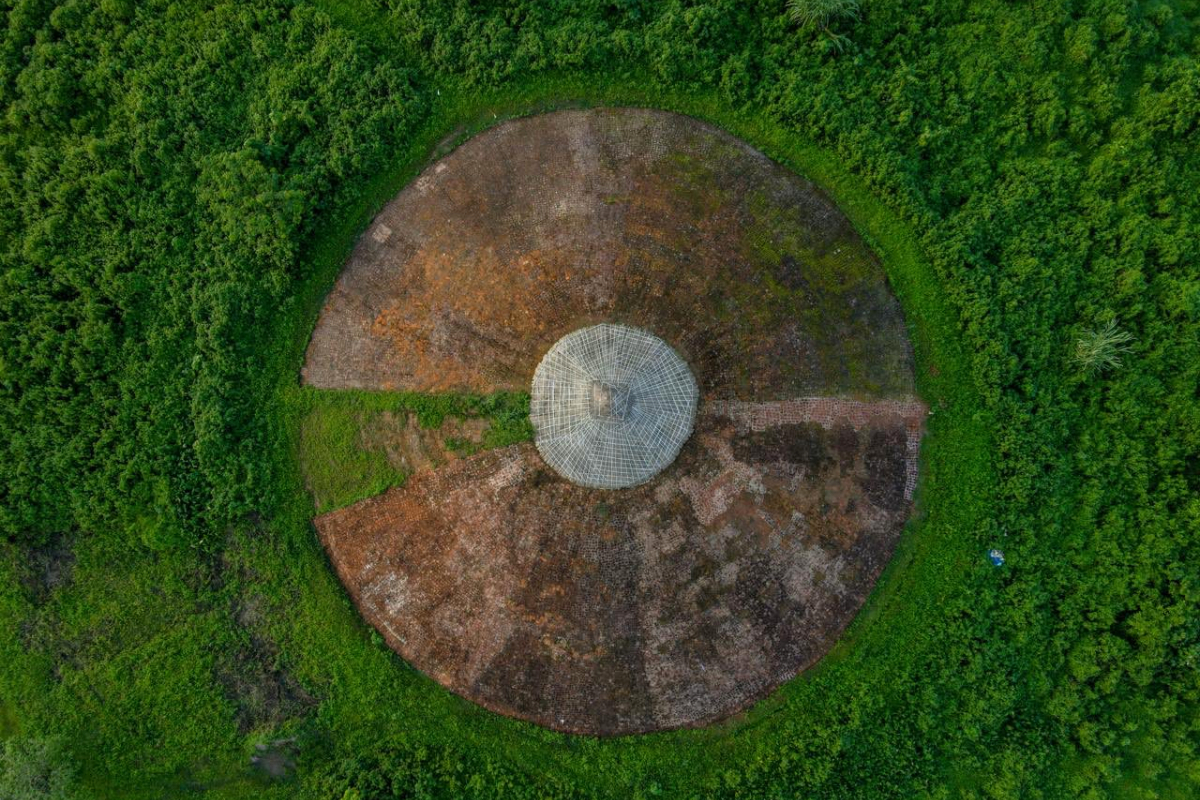Assam’s Charaideo Moidams, the royal burial sites of the Ahom dynasty, have recently been inscribed on the United Nations Educational, Scientific and Cultural Organization (UNESCO) World Heritage Sites list.
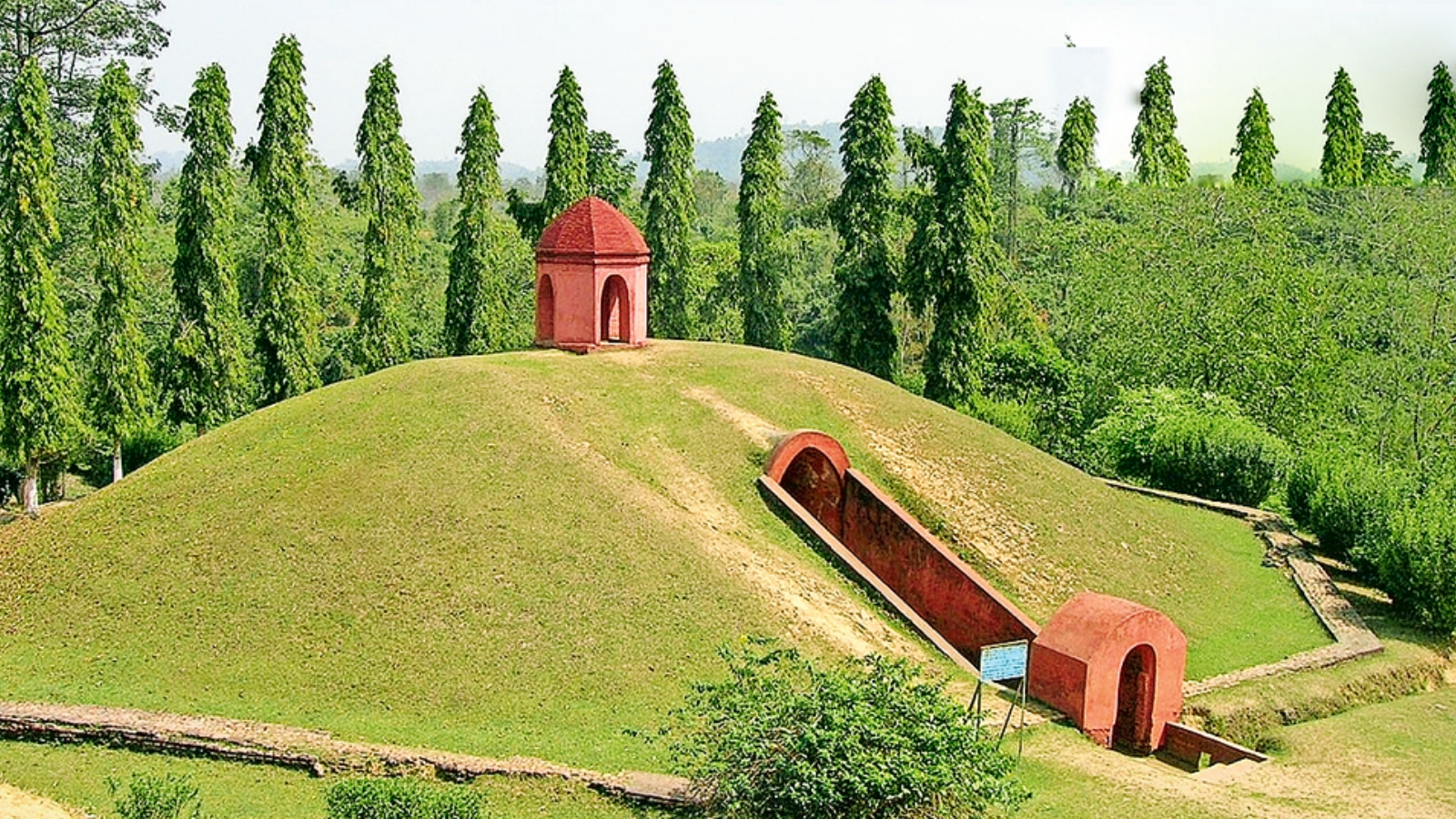
The Charaideo Moidams stand as magnificent testaments to the ancient Ahom dynasty’s reverence for their royalty and the unique funerary practices that characterized their culture. Nestled in the scenic landscape of Assam, these monumental structures are not merely burial sites; they are steeped in history and rich in architectural significance.
The Charaideo Moidams are ancient burial sites of the Ahom dynasty, which reigned over Assam and the North East from 1228 to 1826 AD. Located about 30 kilometers from Sivasagar town in eastern Assam, these tumuli continue to be revered by locals. The Ahom dynasty's legacy, encapsulated in these burial mounds, represents a rich cultural and historical heritage.
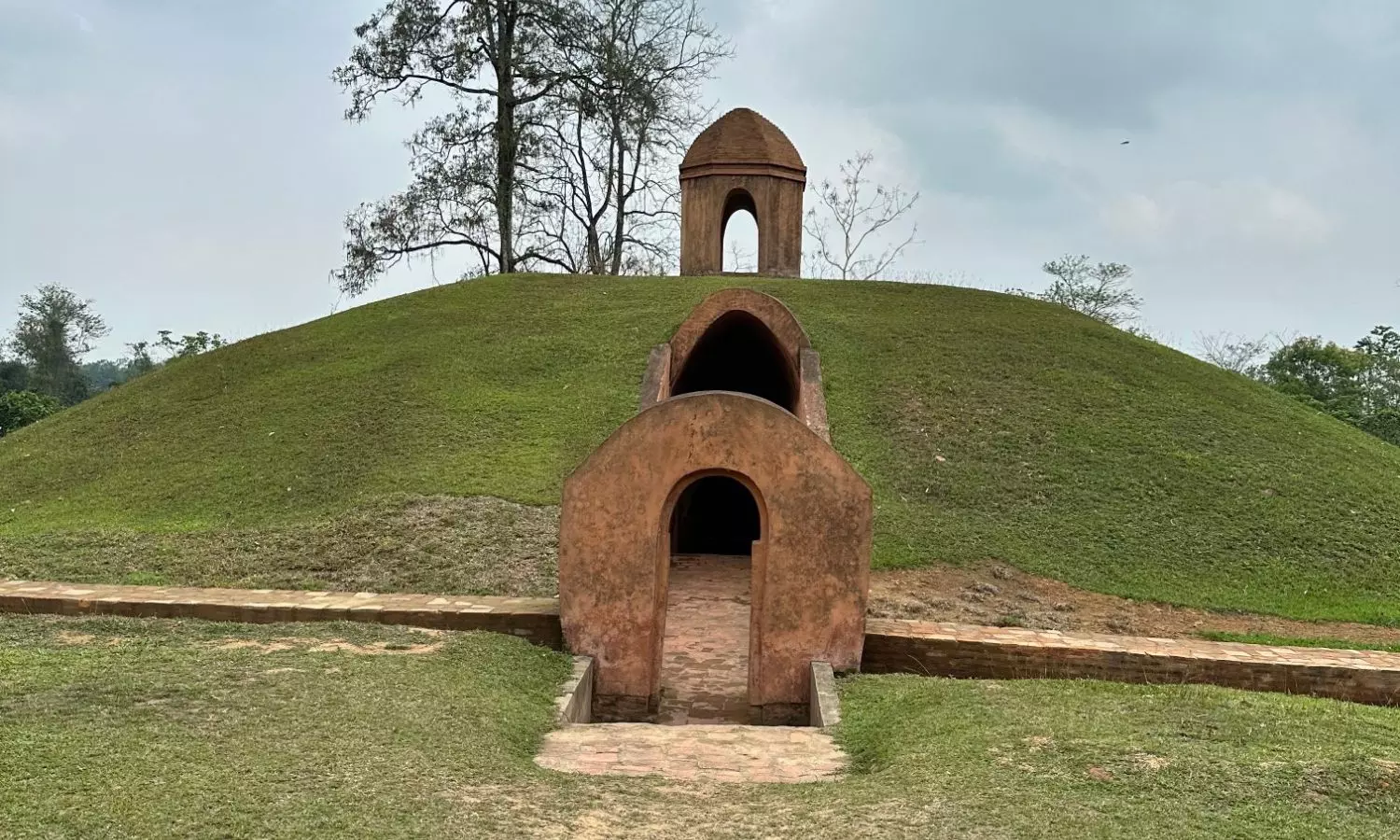
UNESCO Recognition: A Blend of Culture and Politics
The inclusion of Charaideo Moidams in the UNESCO World Heritage list is a significant milestone. This recognition not only honors the historical and cultural importance of the Ahom dynasty's burial sites but also reflects the strategic political maneuvering by contemporary Indian leaders. The Bharatiya Janata Party (BJP) has strategically leveraged this cultural heritage to court the Ahom community, showcasing how cultural recognition can be intertwined with political aspirations.
Prime Minister Narendra Modi welcomed the announcement, and Assam Chief Minister Himanta Biswa Sarma celebrated it as a significant achievement for Assam. In a tweet, Sarma emphasized the Moidams' embodiment of the Tai-Ahom community's spiritual beliefs, heritage, and architectural prowess.
ভাৰতৰ বাবে অপৰিসীম আনন্দ আৰু গৌৰৱৰ বিষয়!
চৰাইদেউ মৈদামে গৌৰৱময় আহোম সংস্কৃতিক প্ৰদৰ্শন কৰে, যি পূৰ্বপুৰুষৰ প্ৰতি পৰম শ্ৰদ্ধাক প্ৰতিফলিত কৰে। মই আশা কৰো আৰু অধিক লোকে মহান আহোম শাসন আৰু সংস্কৃতিৰ বিষয়ে জানিব পাৰিব।
মৈদাম #WorldHeritage তালিকাৰ অন্তৰ্ভুক্ত হোৱাত আনন্দিত… https://t.co/DyyH2nGHN7 — Narendra Modi (@narendramodi) July 26, 2024
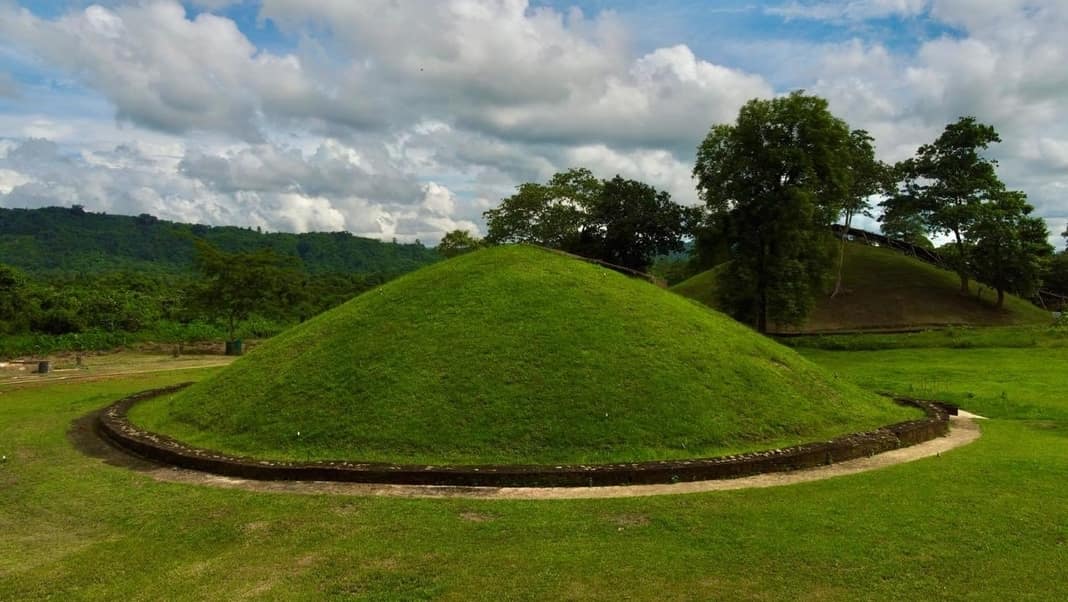
What are Charaideo Moidams?
A moidam is defined as a tumulus—a mound of earth constructed over a grave—particularly one belonging to Ahom royalty and aristocracy. While the Charaideo region is renowned for its royal moidams, other similar burial sites can be found scattered throughout Eastern Assam, particularly between the towns of Jorhat and Dibrugarh.
Architecture and Significance
-
Structural Elements:
-
Vaulted Chambers: Typically housing the remains of Ahom rulers, often accompanied by offerings and treasures believed necessary for the afterlife.
-
Hemispherical Mounds: Rising prominently above the ground, these mounds vary in height, reflecting the stature of the interred.
-
Chow Chali Pavilions: Atop each mound sits a pavilion, used for annual rituals and offerings, reminiscent of the grandeur found in ancient Egyptian pyramids.
-
Surrounding Walls: An octagonal boundary with an arched entrance serves as a protective enclosure, emphasizing the sacredness of the site.
-
-
Cultural Parallels:
-
The burial practices of the Ahoms draw intriguing parallels with ancient Egyptian customs, marking the Charaideo Moidams as "Pyramids of Assam."
-
Historical and Cultural Context
-
Founding and Evolution:
-
Established in 1253 AD by King Sukaphaa, Charaideo served as the first capital of the Ahom Kingdom, retaining its symbolic importance throughout the dynasty's reign.
-
Over six centuries, it became customary to bury Ahom royalty at Charaideo, solidifying its status as a center of ritual and political significance.
-
-
Tourism and Recognition:
-
Designated as a protected site by UNESCO, Charaideo Moidams attract visitors worldwide, promising economic opportunities for the region.
-
The recognition also aims to preserve these historical treasures and promote Assam's rich heritage on a global stage.
-
Contemporary Significance and Future Prospects
-
Tourism and Economic Impact:
-
With increasing recognition, efforts are underway to enhance infrastructure and accessibility to Charaideo, bolstering tourism and local economies.
-
Local communities are encouraged to engage in tourism-related activities, ensuring sustainable development while safeguarding cultural heritage.
-
-
Preservation Challenges:
-
Despite protective measures, many moidams are in need of restoration, highlighting the ongoing conservation efforts required to maintain their integrity and historical value.
-
Who were the Ahom Dynasty?
The Ahoms, an influential dynasty in Indian history, once ruled over a vast region extending from modern-day Bangladesh to deep within Burma. Their reign, which lasted for nearly six centuries, is marked by both formidable administrative skills and remarkable military prowess. The dynasty's legacy is particularly enduring in Assam, where the Ahoms' contributions to the region's cultural and political landscape remain significant.
-
Historical Significance of the Ahoms
-
Origins and Expansion: The Ahoms originated from Southeast Asia, migrating to India in the 13th century under the leadership of Tai Prince Chaolung Sukapha. Their arrival in Assam marked the beginning of a powerful and enduring kingdom. The Ahoms established a robust political structure and developed innovative systems of governance, including the Paik system—a unique form of military and labor organization.
-
Resistance Against the Mughals: One of the Ahom dynasty's most notable achievements was its resistance against the Mughal Empire, particularly during the Battle of Saraighat in 1671. Led by the legendary commander Lachit Borphukan, the Ahoms successfully defended their territory from the Mughal invasion. This battle remains a symbol of the Ahoms' courage and strategic acumen.
-
Cultural and Political Legacy
-
The Ahom Contribution to Assamese Identity: The Ahoms are celebrated not only for their military achievements but also for their role in shaping the cultural and political identity of Assam. Their policies of cultural assimilation and innovative administrative practices contributed significantly to the region's governance and societal structure.
-
Lachit Borphukan's Legacy: Lachit Borphukan, a revered figure in Assamese history, epitomizes the Ahoms' valor and leadership. The 400th birth anniversary of Lachit Borphukan was marked with grandeur in New Delhi, with Prime Minister Narendra Modi acknowledging his unparalleled courage and visionary leadership. This celebration highlights the continued relevance of the Ahom legacy in contemporary India.
-
The Ahoms in Contemporary Assam: Today, the Ahoms remain a prominent ethnic group in Assam, actively participating in the state's political, social, and cultural spheres. Their historical significance and cultural heritage continue to shape the region's identity.
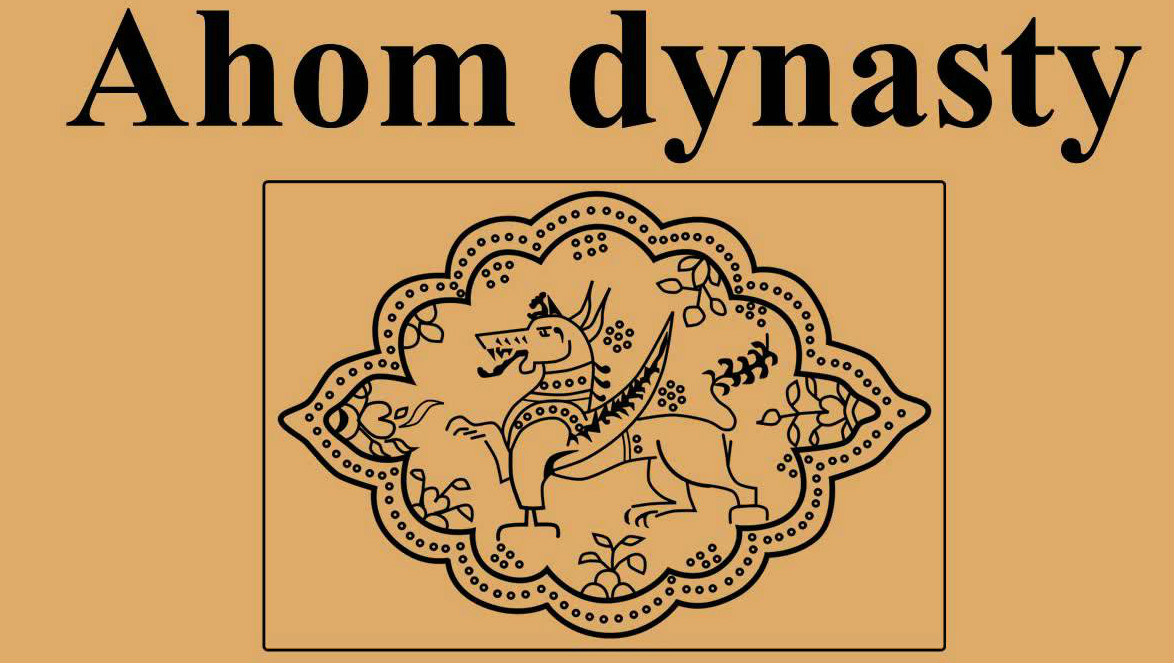
The UNESCO World Heritage Status of Moidams: A Political Perspective
-
The Strategic Timing of Recognition
The recent UNESCO World Heritage status granted to the Moidams—a group of ancient burial mounds associated with the Ahom dynasty—holds significant political implications. This recognition, long awaited, comes at a crucial time as Assam prepares for its Assembly elections in 2026. For the BJP, this acknowledgment of the Moidams is an opportunity to consolidate support from the Ahom community and bolster their electoral prospects.
-
Political Significance
The timing of the Charaideo Moidams' UNESCO recognition is fortuitous for the BJP, with Assam's Assembly elections on the horizon in 2026. The Ahom community's substantial voter base in Upper Assam is crucial to the BJP's electoral strategy. By securing international recognition for the Moidams, the BJP aims to foster cultural pride and belonging among the people of Assam, potentially benefiting from this sentiment in upcoming elections.
For years, Assam has struggled with feelings of being sidelined in national policies. This recognition could reshape Assam's image, countering narratives of neglect and positioning the state prominently within the national narrative. The BJP hopes to capitalize on this achievement, either overtly or subtly, to gain political mileage.
-
The Role of the Ahom Community in Elections
The Ahom community, constituting a significant portion of the electorate in Assam, holds considerable sway in elections. The strategic importance of the Ahom community was highlighted in the 2024 Lok Sabha elections, where Congress MP Gaurav Gogoi secured a significant victory in the Jorhat constituency, including Ahom-dominated areas. With the Ahom community comprising over 32% of the electorate in Jorhat, their votes are pivotal. The BJP's strategic reassessment following this electoral upset underscores the Ahom community's critical role in shaping Assam's political future, including the unveiling of a statue of Lachit Borphukan by Prime Minister Modi.
The UNESCO World Heritage status for the Charaideo Moidams is a testament to Assam's rich cultural heritage and historical significance. It not only honors the Ahom dynasty's legacy but also strategically positions the BJP to leverage this recognition for future political gains. This development highlights the intricate interplay between heritage and electoral strategy, showcasing how cultural recognition can influence contemporary politics.
With inputs from agencies
Image Source: Multiple agencies
© Copyright 2024. All Rights Reserved Powered by Vygr Media.

